RabbitMQ
1.消息队列解决的问题:
1.异步处理
2.应用解耦
3.流量削锋
4.日志处理
2.安装RabbitMQ
1.下载并安装erlang
下载地址:http://www.erlang.org/downloads
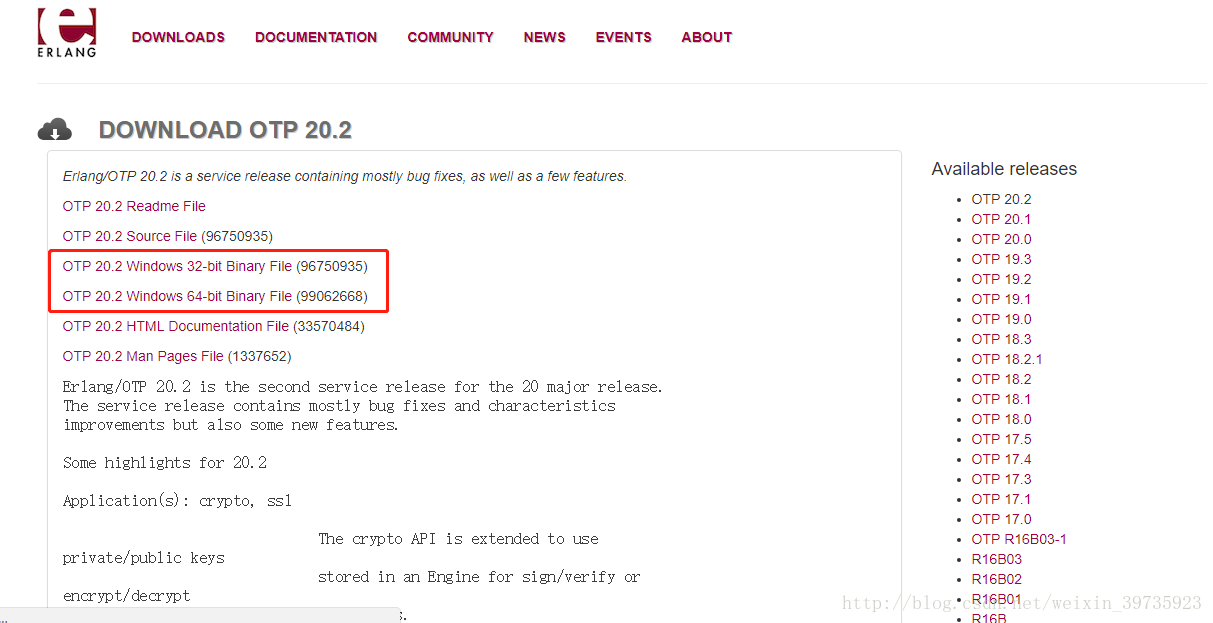
一路下一步
2.配置系统环境变量
1.添加系统变量

2.修改系统变量的path
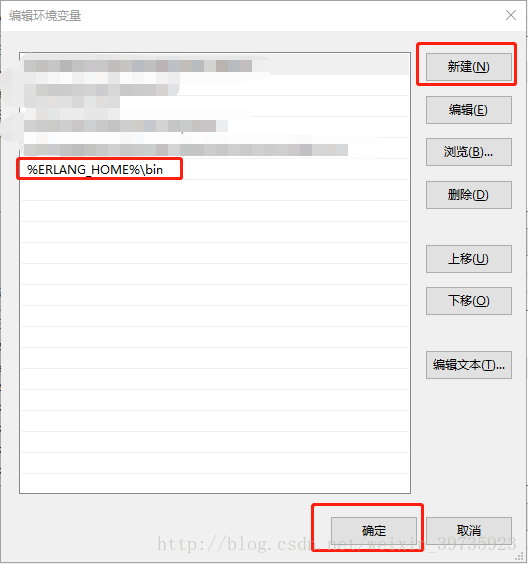
最后windows键+R键,输入cmd,再输入erl,看到版本号就说明erlang
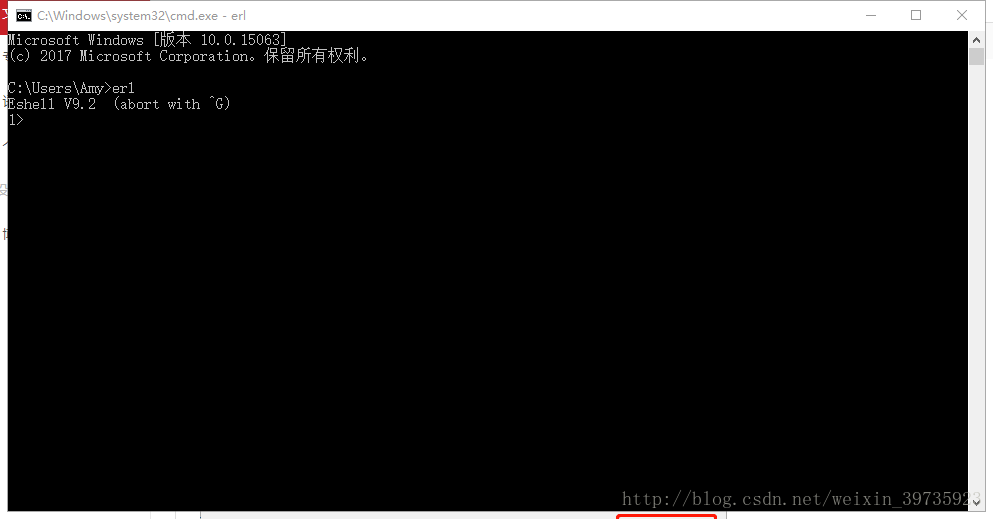
下载地址: https://www.rabbitmq.com/install-windows.html

一路下一步安装
在RabbitMQ的sbin目录打开cmd运行代码进行安装
rabbitmq-plugins enable rabbitmq_management
然后输入
rabbitmqctl status
出现这个图表示安装成功,并且 RabbitMQ Server 已经启动
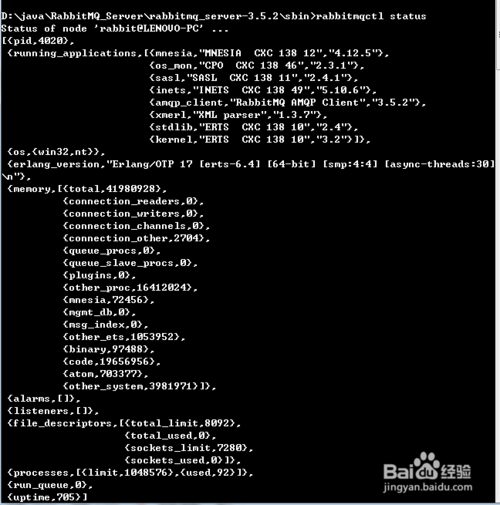
超级用户的账号密码都是:guest
1.添加用户
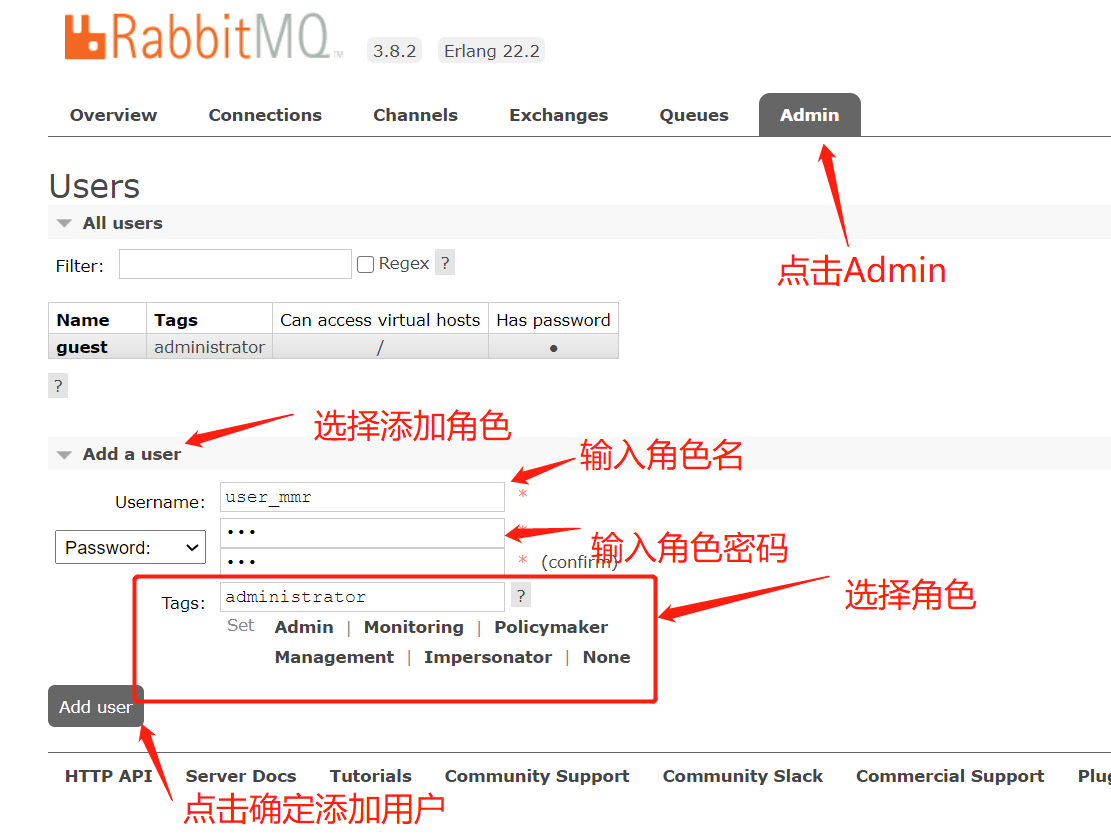
添加完用户后需要指定数据库
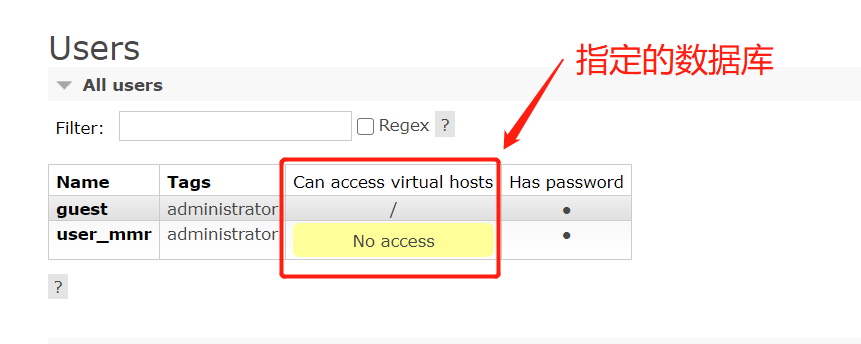
添加数据库:
host的名一般以/开头
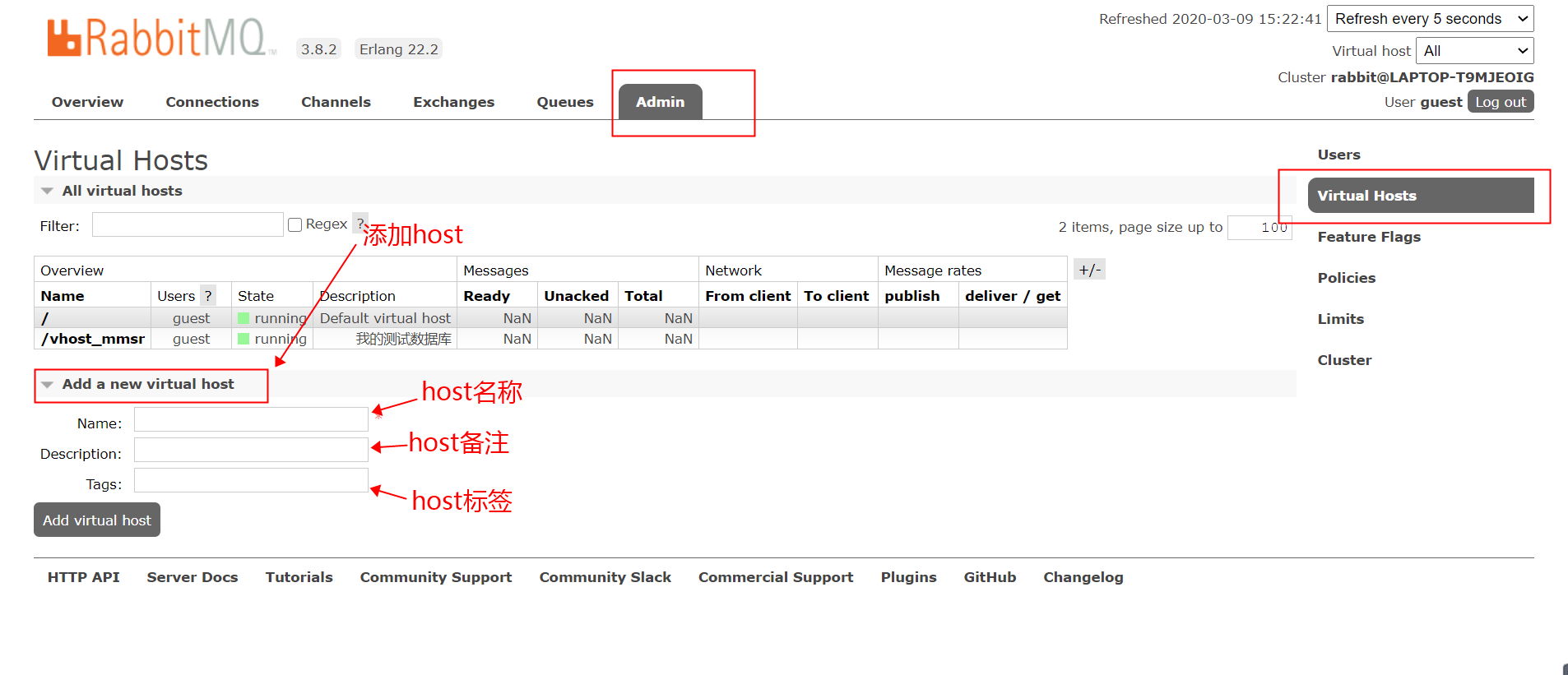
给host指定用户
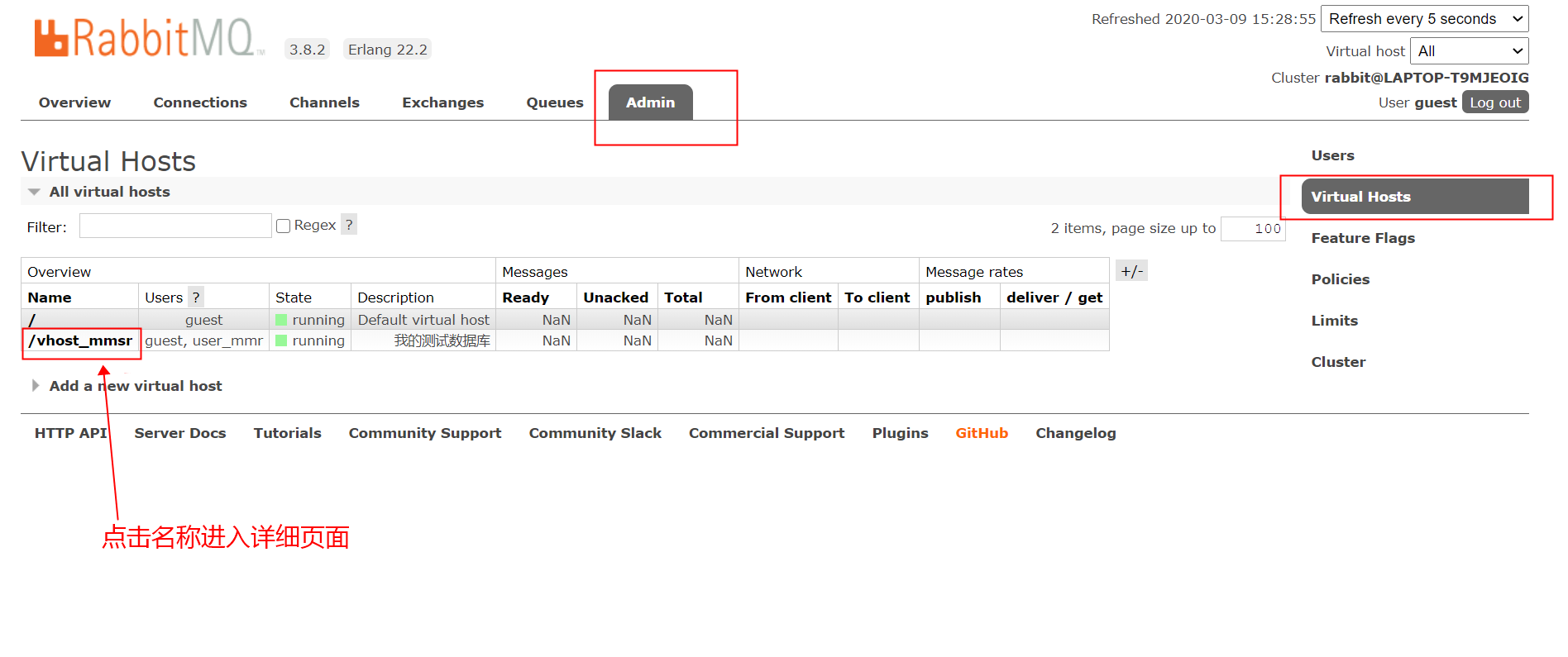
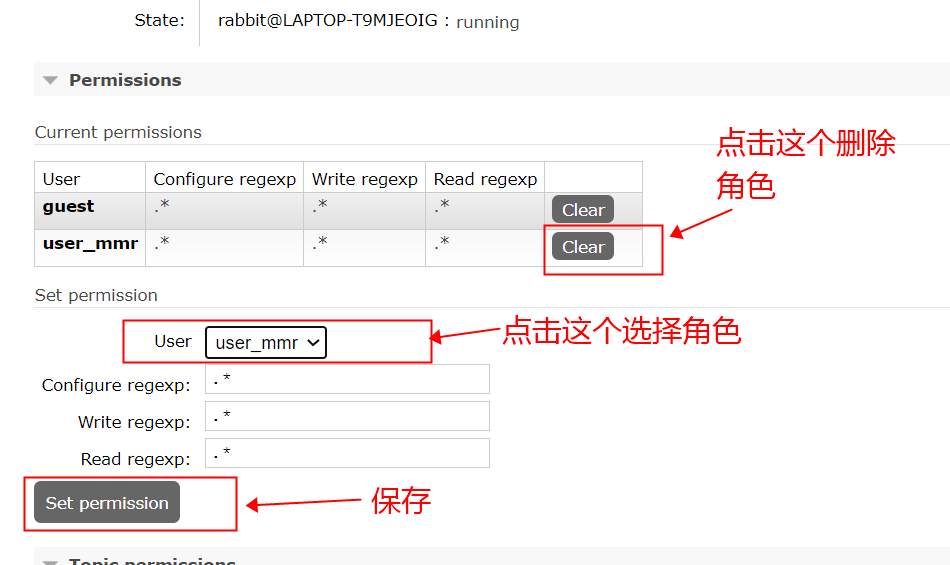
1.简单队列

p消息生产者 红色消息队列 c消费者
消费者 @Component @RabbitListener(queues="监听的消息队列名称") public class DirectReceiver{ @RabbitHandler public void process(Map massage){ System.out.println(massage.toString) } }
耦合性高,生产者一 一对应,如果有多个消费者,消费消息队列中的消息时就不行了
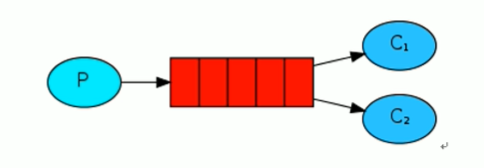
这种方式是产生的效果是:生产者产生50条数据两个消费者会每个消费25条,消费者1是偶数,消费者2是奇数,这种方式叫轮询分发
可以设置公平分发:公平分发的话,要将自动应答改成手动的,@RabbitListener注解设置优先等级priority
例子:@RabbitListener(queues = "ceshi",priority = "1")
1 2 3 4 | //创建消息队列 public Queue ceshi() { return new Queue("ceshi", true); //true 是否持久 } |
rabbitmq不支持重新定义已有的消息队列,如果在代码中改的话代码不会报错,但是运行时会报错
删除消息队列
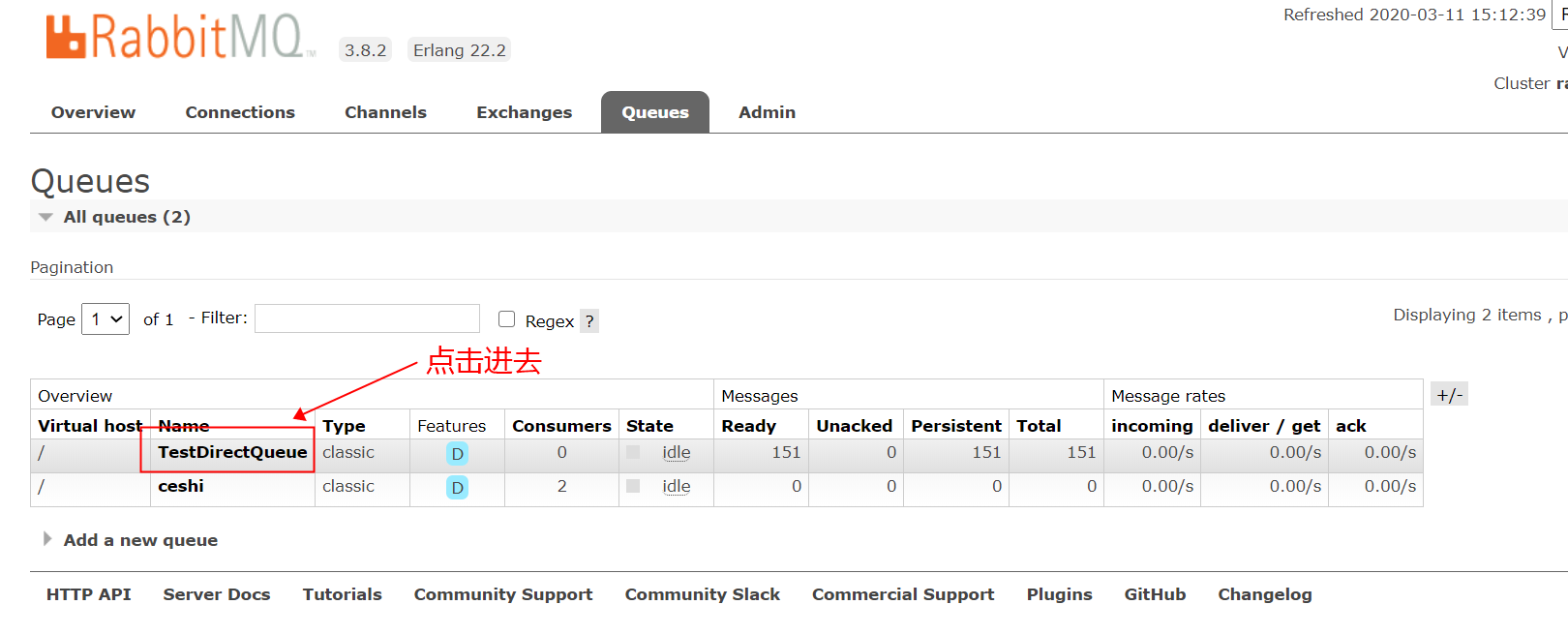
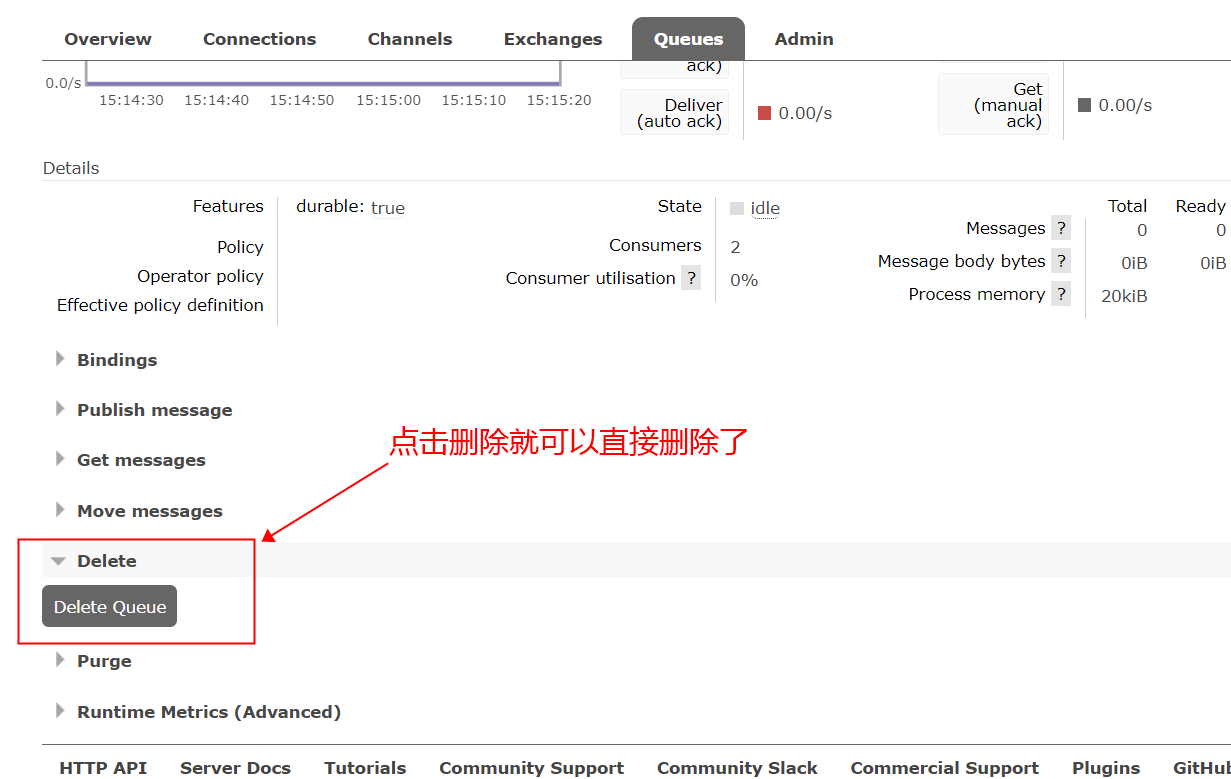
Exchange交换机
交换机一方面是接收生产者的消息,另一方面是向队列推送消息
Direct模式:处理路由键,发送的时候带一个路由key,队列只保存相对应模式的内容
例子:
1.导入jar包
<dependency> <groupId>org.springframework.boot</groupId> <artifactId>spring-boot-starter-amqp</artifactId> </dependency>
2.配置application.properties文件
server: server.port: 8021 spring rabbitmq: host: 127.0.0.1 port: 5672 username: guest password: guest virtual-host: vhost_mmsr
3.交换机和消息队列配置类
import org.springframework.amqp.core.Binding; import org.springframework.amqp.core.BindingBuilder; import org.springframework.amqp.core.DirectExchange; import org.springframework.amqp.core.Queue; import org.springframework.context.annotation.Bean; import org.springframework.context.annotation.Configuration; @Configuration public class DirectRabbitConfig { //创建消息队列 起名:TestDirectQueue @Bean public Queue TestDirectQueue() { return new Queue("TestDirectQueue", true); //true 是否持久 } //创建路由(Direct)交换机 起名:TestDirectExchange @Bean DirectExchange TestDirectExchange() { return new DirectExchange("TestDirectExchange"); } //绑定 将队列和交换机绑定, 并设置用于匹配键:TestDirectRouting @Bean Binding bindingDirect() { return BindingBuilder.bind(TestDirectQueue()).to(TestDirectExchange()).with("TestDirectRouting"); } }
4.生产者
@Autowired RabbitTemplate rabbitTemplate; public void sendMessage(){ Map<String,Object> map=new HashMap<>(); map.put("测试key",“测试内容”); rabbitTemplate.convertAndSend("交换机的名",“匹配的键名”,值); }
将路由和某模式匹配
通配符:# 匹配一个或多个,*匹配一个
3.生产者交换机和消息队列配置类
import org.springframework.amqp.core.Binding; import org.springframework.amqp.core.BindingBuilder; import org.springframework.amqp.core.Queue; import org.springframework.amqp.core.TopicExchange; import org.springframework.context.annotation.Bean; import org.springframework.context.annotation.Configuration; @Configuration public class TopicRabbitConfig { //绑定键 public final static String man="topic.man"; public final static String woman="topic.woman"; //创建消息队列 @Bean public Queue firsQueue(){ return new Queue(TopicRabbitConfig.man); } //创建消息队列 @Bean public Queue secondQueue(){ return new Queue(TopicRabbitConfig.woman); } //创建交换机 @Bean TopicExchange exchange(){ return new TopicExchange("topicExchange"); } //将交换机和消息队列绑定 @Bean Binding bindingExchangeMessage(){ return BindingBuilder.bind(firsQueue()).to(exchange()).with(man); } //将交换机和消息队列绑定 @Bean Binding bindingExcangeMessage2(){ return BindingBuilder.bind(secondQueue()).to(exchange()).with(woman); } }
4.生产者发送信息
@GetMapping(value = "/sendTopicMessage1") public String sendTopicMessage1(){ //交换机名称 //键 //值 rabbitTemplate.convertAndSend("topicExchange","topic.man","1号"); return "ok"; }
5.创建消费者交换机和消息队列配置类
import org.springframework.amqp.core.Binding; import org.springframework.amqp.core.BindingBuilder; import org.springframework.amqp.core.Queue; import org.springframework.amqp.core.TopicExchange; import org.springframework.context.annotation.Bean; import org.springframework.context.annotation.Configuration; @Configuration public class TopicRabbitConfig { //绑定键 public final static String man="topic.#"; //创建消息队列 @Bean public Queue firsQueue(){ return new Queue(TopicRabbitConfig.man); } //创建交换机 @Bean TopicExchange exchange(){ return new TopicExchange("topicExchange"); } //将消息队列和交换机绑定 @Bean Binding bindingExchangeMessage(){ return BindingBuilder.bind(firsQueue()).to(exchange()).with(man); } }
6.创建消费者
@Component @RabbitListener(queues = "topic.#")//设置监听topic.所有的 public class TopicManReceiver { @RabbitHandler public void sc(String s){ System.out.println("2号:"+s); } }
6.扇形交换机(FanoutExchange)
不带路由的就是扇形交换机
例子:
//交换机队列配置 import org.springframework.amqp.core.Binding; import org.springframework.amqp.core.BindingBuilder; import org.springframework.amqp.core.FanoutExchange; import org.springframework.amqp.core.Queue; import org.springframework.context.annotation.Bean; import org.springframework.context.annotation.Configuration; @Configuration public class FanoutExchangeConfig { @Bean public Queue one(){ return new Queue("a"); } @Bean public Queue two(){ return new Queue("b"); } //创建扇形交换机 @Bean public FanoutExchange getFanoutExchange(){ return new FanoutExchange("shanxing"); } @Bean Binding ba(){ //扇形交换机绑定的时候不用写出路由 return BindingBuilder.bind(one()).to(getFanoutExchange()); } @Bean Binding bb(){ return BindingBuilder.bind(two()).to(getFanoutExchange()); } }
生产者 @GetMapping(value = "/sendFanoutExchange") public String sendFanoutExchange(){ //输出的时候不用带路由 rabbitTemplate.convertAndSend("shanxing",null,"扇形交换机内容"); return "扇形交换机"; }
消费者和以前一样监听 @Component @RabbitListener(queues = "a") public class FanoutExchangeReceiver { @RabbitHandler public void sc(String s){ System.out.println("a:"+s); } }
7.消息确认
在rabbitmq中我们可以通过持久化数据,解决rabbitmq服务器异常,的数据丢失问题
实现事物机制的两种方式:
AMQP实现了事物机制
Confirm模式
事物机制
txSelect : 用户将当前的channel设置为transation模式
txCommit : 用于提交事物
txRollback : 回滚事物

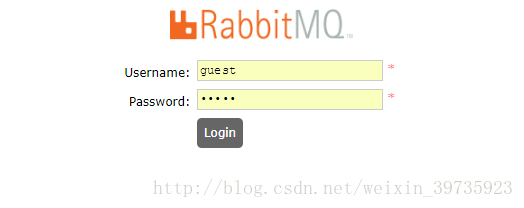

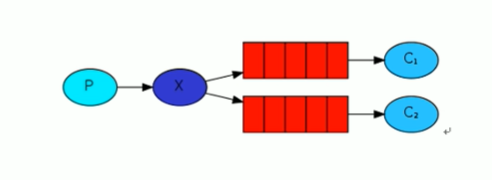
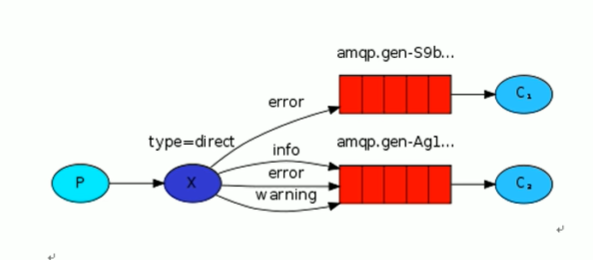



【推荐】国内首个AI IDE,深度理解中文开发场景,立即下载体验Trae
【推荐】编程新体验,更懂你的AI,立即体验豆包MarsCode编程助手
【推荐】抖音旗下AI助手豆包,你的智能百科全书,全免费不限次数
【推荐】轻量又高性能的 SSH 工具 IShell:AI 加持,快人一步
· 10年+ .NET Coder 心语,封装的思维:从隐藏、稳定开始理解其本质意义
· .NET Core 中如何实现缓存的预热?
· 从 HTTP 原因短语缺失研究 HTTP/2 和 HTTP/3 的设计差异
· AI与.NET技术实操系列:向量存储与相似性搜索在 .NET 中的实现
· 基于Microsoft.Extensions.AI核心库实现RAG应用
· TypeScript + Deepseek 打造卜卦网站:技术与玄学的结合
· 阿里巴巴 QwQ-32B真的超越了 DeepSeek R-1吗?
· 【译】Visual Studio 中新的强大生产力特性
· 10年+ .NET Coder 心语 ── 封装的思维:从隐藏、稳定开始理解其本质意义
· 【设计模式】告别冗长if-else语句:使用策略模式优化代码结构